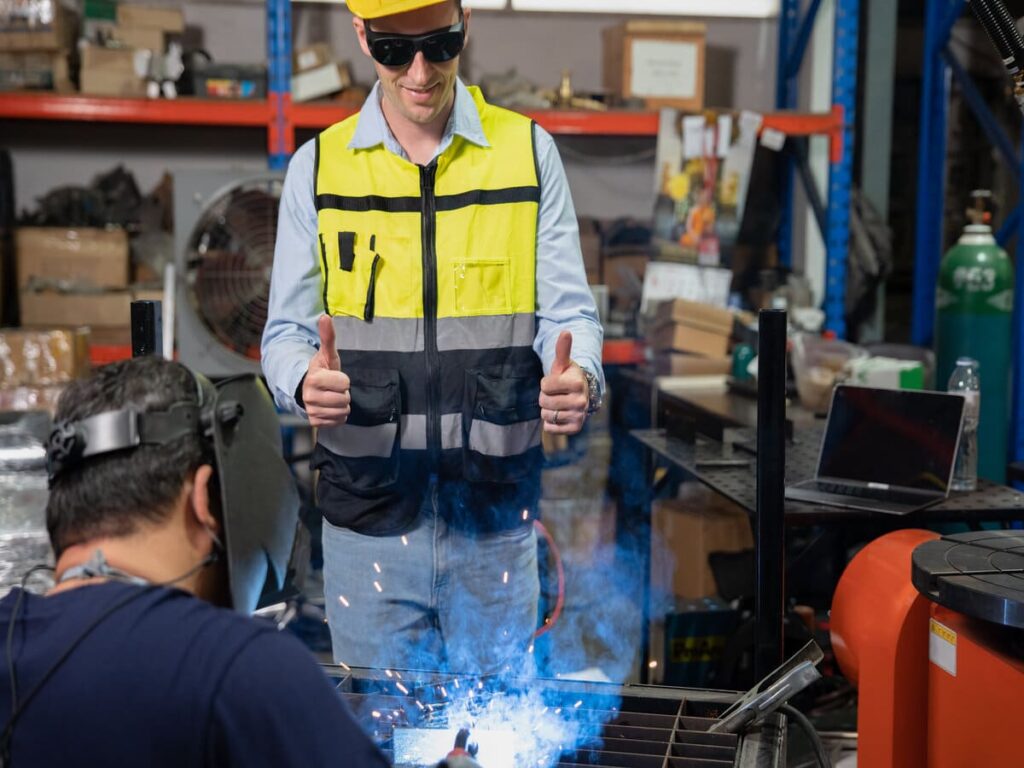Innovative Approaches to Fillet Weld Evaluation and Testing: Enhancing Weld High Quality and Compliance Specifications
In the realm of welding, the quality and integrity of fillet welds play a crucial function in making sure the architectural sturdiness and integrity of numerous commercial parts. With the consistent drive for boosted performance and conformity with rigorous criteria, the expedition of cutting-edge strategies to fillet weld examination and screening has actually ended up being imperative. As sectors advance, the traditional approaches might no much longer be sufficient in meeting the demands of modern welding applications. By accepting advanced technologies and methodologies, a brand-new perspective of possibilities arises in the world of weld quality assessment and adherence to conformity requirements.
Advanced Non-Destructive Screening Methods
Making use of cutting edge modern technologies, advanced non-destructive screening methods play a crucial function in ensuring the stability and quality of fillet welds. These approaches, such as phased range ultrasonic screening (PAUT) and magnetic particle testing (MPT), deal comprehensive understandings right into the weld's internal framework without creating any damages to the product. PAUT, for instance, makes use of multiple ultrasonic aspects to evaluate the weld from different angles, supplying an extensive visualization of prospective flaws like lack of combination or cracks.
By using these sophisticated non-destructive screening methods, weld inspectors can accurately assess the top quality of fillet welds, making certain conformity with market standards and regulations. The ability to identify defects early on not only boosts weld top quality however also prevents pricey rework or failures in structural honesty, highlighting the importance of these innovative screening methods in welding inspections.
Robotics and Automation in Inspection
The assimilation of robotics and automation has transformed the inspection procedure for fillet welds, enhancing performance and accuracy in quality evaluation. Robotics provide specific control and repeatability in checking welds, ensuring trustworthy and consistent outcomes. Automated systems can be programmed to comply with specific examination paths, making certain complete coverage of welds and minimizing the risk of human mistake.
Robot evaluation systems outfitted with advanced sensing units can identify and determine weld attributes with high precision, supplying detailed data for evaluation. These systems can identify problems such as splits, lack of combination, and porosity, making it possible for prompt restorative activities to be taken. Additionally, robotics and automation permit for real-time information collection and analysis, supplying prompt feedback to operators and promoting quick decision-making processes.
Moreover, making use of robotics and automation in fillet weld evaluation enhances total productivity by decreasing assessment times and raising evaluation throughput. By enhancing the examination procedure, manufacturers can guarantee weld high quality and conformity criteria are fulfilled efficiently, ultimately causing set you back financial savings and enhanced product quality.
Using Artificial Knowledge for Analysis
Fabricated knowledge plays a crucial duty in boosting the performance and accuracy of evaluation in fillet weld evaluation processes. AI formulas can rapidly refine large quantities of data from weld examinations, identifying problems or inconsistencies that might be challenging to determine with the nude eye - Welding Inspection Racine.
In addition, AI systems can gain from previous inspection data, continuously improving their capability to recognize possible problems and variances in fillet welds. This adaptive learning capacity enhances the general quality assurance procedure, decreasing the probability of human mistake and making certain that welds meet the needed criteria. By incorporating expert system into fillet weld analysis, markets can attain greater degrees of efficiency, consistency, and compliance in their evaluation methods.
Portable Equipment for On-Site Assessment
 Enhancing field assessment performance, the adoption of portable tools transforms on-site analysis procedures for fillet welds. These devices offer versatility and ease, allowing inspectors to carry out extensive exams in numerous areas, consisting of tough or remote settings. Mobile devices such as ultrasonic screening tools, magnetic fragment examination tools, and electronic radiography systems give real-time information and high-resolution imaging capacities, making it possible for fast decision-making and prompt comments on weld high quality.
Enhancing field assessment performance, the adoption of portable tools transforms on-site analysis procedures for fillet welds. These devices offer versatility and ease, allowing inspectors to carry out extensive exams in numerous areas, consisting of tough or remote settings. Mobile devices such as ultrasonic screening tools, magnetic fragment examination tools, and electronic radiography systems give real-time information and high-resolution imaging capacities, making it possible for fast decision-making and prompt comments on weld high quality.One substantial benefit of portable tools is their ability to streamline inspection treatments, lowering downtime and boosting general efficiency. Inspectors can easily transport these devices to various task sites, eliminating the need for delivering heavy equipment or components to off-site facilities. In addition, the portability of these tools promotes cost-effectiveness by reducing transport expenditures and increasing inspection timelines.
Furthermore, using portable tools for on-site inspection promotes proactive quality assurance procedures, as inspectors can without delay determine and deal with any kind of prospective welding defects or disparities. By integrating these cutting-edge innovations into on-site assessment practices, welding specialists can guarantee conformity with industry criteria and enhance weld top quality, ultimately causing improved architectural integrity and security in numerous welding applications.
Integration of Information Management Solution
Having actually optimized on-site assessment processes with the application of portable tools, the following stage involves the seamless assimilation of data management systems to additionally boost efficiency and data evaluation capacities in fillet weld evaluation and testing. Welding Inspection Racine. By incorporating information management systems into the assessment procedure, companies can improve data collection, storage space, and evaluation. This integration permits real-time tracking of weld top quality, immediate identification of problems, and timely decision-making to rectify any type of problems that you could check here might emerge throughout the inspection process
Data administration systems play a crucial role in streamlining assessment information, facilitating easy access for authorized workers, and guaranteeing data stability and safety and security. With the combination of these systems, examiners can produce extensive reports, track historical information for pattern analysis, and improve general process effectiveness. Moreover, the combination of data management systems enables smooth interaction between different stakeholders involved in the inspection procedure, promoting partnership and enhancing overall top quality control procedures. important link Inevitably, the combination of data monitoring systems serves to elevate the criteria of fillet weld evaluation and testing, making sure compliance with sector guidelines and improving weld quality.
Final Thought
In verdict, ingenious strategies to fillet weld evaluation and screening have actually substantially enhanced weld high quality and conformity standards. Advanced non-destructive testing techniques, robotics, automation, artificial knowledge, mobile devices, and data management systems have actually reinvented the way weld examinations are performed. By using these modern technologies, industries can make certain that welds fulfill the called for top quality requirements and policies, eventually enhancing general performance and security in welding processes.

By utilizing these innovative non-destructive testing methods, weld assessors can accurately assess the high quality of fillet welds, ensuring compliance with industry requirements and laws. Mobile tools such as ultrasonic screening tools, magnetic fragment assessment tools, and electronic radiography systems supply real-time information and high-resolution imaging abilities, allowing fast decision-making and instant comments on weld quality.
Having actually maximized on-site evaluation processes with the utilization of portable devices, the following phase involves the smooth assimilation of information administration systems to further boost performance and data analysis capacities in fillet weld assessment and testing (Welding Inspection Racine). why not try these out Ultimately, the assimilation of data management systems offers to elevate the criteria of fillet weld assessment and testing, ensuring conformity with industry laws and improving weld quality
 In conclusion, innovative strategies to fillet weld assessment and testing have actually substantially enhanced weld top quality and compliance standards.
In conclusion, innovative strategies to fillet weld assessment and testing have actually substantially enhanced weld top quality and compliance standards.